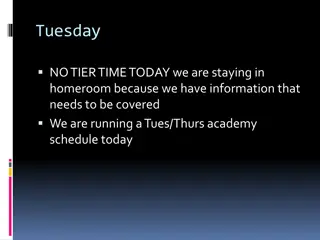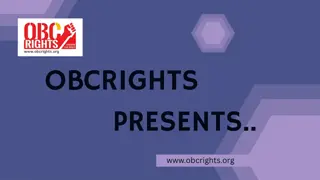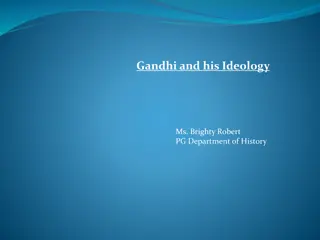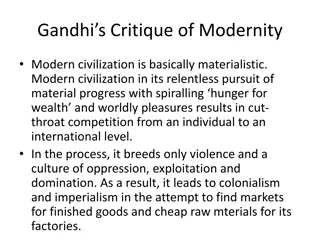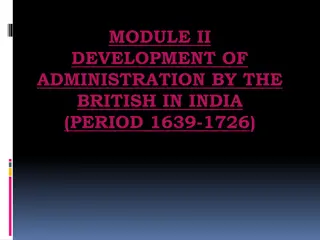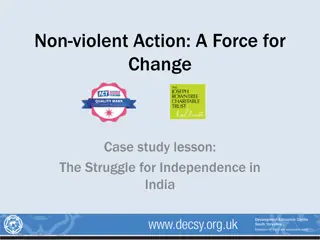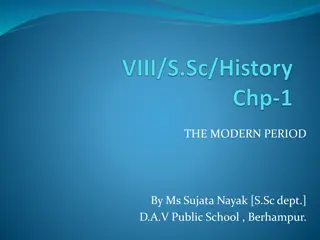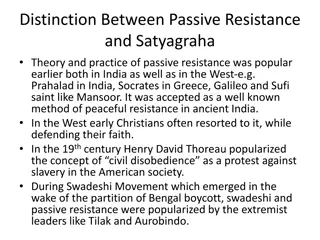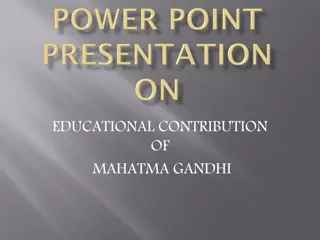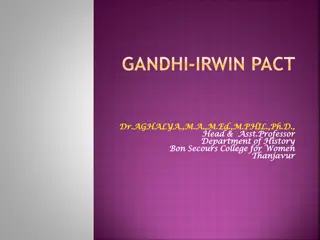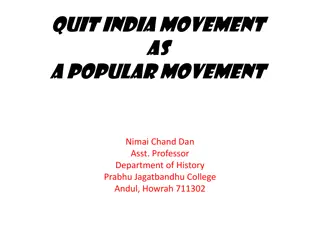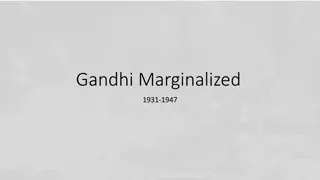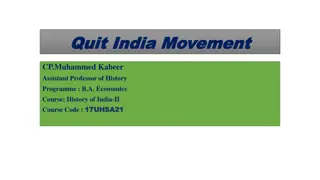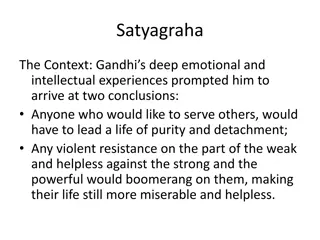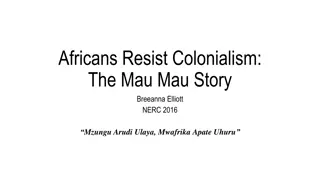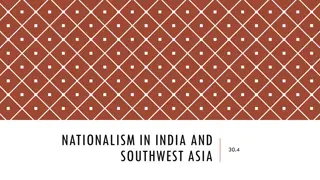Impact of Gandhi's Satyagraha on British India's Independence Struggle
Gandhi's principles of Satyagraha, emphasizing civil disobedience and non-violence, played a crucial role in India's fight for independence from British colonial rule. His leadership and methods such as boycotts and peaceful protests garnered international support, pressuring the British government to eventually grant self-rule in 1935. Despite challenges and tragic events like the Amritsar Massacre, Gandhi's teachings and actions left a lasting impact on India's nationalist movement.
Download Presentation

Please find below an Image/Link to download the presentation.
The content on the website is provided AS IS for your information and personal use only. It may not be sold, licensed, or shared on other websites without obtaining consent from the author.If you encounter any issues during the download, it is possible that the publisher has removed the file from their server.
You are allowed to download the files provided on this website for personal or commercial use, subject to the condition that they are used lawfully. All files are the property of their respective owners.
The content on the website is provided AS IS for your information and personal use only. It may not be sold, licensed, or shared on other websites without obtaining consent from the author.
E N D
Presentation Transcript
British India Gains Independence Impact of Gandhi s Satyagraha
Nationalism In India 1757- GB gains economic control of India Nationalism lead by wealthy, educated Indians Indian National Congress (Hindus) Muslim League (Muslims) Unified to fight off British Several Factors lead to India s limited self-rule Rise of Mohandas Gandhi was the largest factor
Mohandas Gandhi Teachings blended Hindu, Islam & Christianity Gained large following Mahatma Great Soul SATYAGRAHA: preached civil disobedience; not violence 1920: convince Indian Nat l Congress to adopt Satyagraha Boycott: GB goods, schools, cloth Economic disaster for GB
The violence begins GB renigs on promis of self-rule for India s help in WWI Creation of the Rowlatt Act WORLD WAR I 1919: Indians protest against remaining 2ndclass citizens GB passes act that jails all protestors w/ not trial; 2 years ROWLATT ACT April, 1919: Peaceful Indian protest against Rowlatt Act turns violent; over 10,000 Indians gathered; GB scared GB opens fire on crowd; killing over 400 Indians AMRISTAR MASSACRE
Gandhis impact 1920: Gandhi convinces Indian Congress to adopt no violence against GB Boycotts used to hurt GB economic profit SATYAGRAHA 1930: Gandhi leads 240 mile march to seacoast to harvest sea salt Demonstrations at GB Salt Works along the march cause brutal beatings from GB ; world was watching; Gandhi gains int l support SALT MARCH GB takes int l politcal pressure to grant self-rule in India 1935: Government of India Act- local self-gov t & limited democratic elections Muslims and Hindus cant agree problems yet to come SELF-RULE
Gandhis Satyagraha Satyagraha, then, is literally holding on to Truth and it means, therefore, Truth-force. For the past thirty years I have been preaching and practicing Satyagraha . Satyagraha differs from Passive Resistance as the North Pole from the South. The latter has been conceived as a weapon of the weak and does not exclude the use of physical force or violence for the purpose of gaining one s end, whereas the former has been conceived as a weapon of the strongest and excludes the use of violence in any shape or form . [the] pursuit of truth did not admit of violence being inflicted on one s opponent but that he must be weaned from error by patience and sympathy. For what appears to be truth to the one may appear to be error to the other.
India Gains Independence 1942: Quit India Campaign: 1. What was it? 2. What caused it? 3. Why was Britain looking to let go of colonies?
India Gains Independence August, 1946: Riots break out in Calcutta 1.Who is rioting? 2.What are the riots about? 3.What decision does Lord Mountbatten come to about India? 4.How does Gandhi feel about the partition?
India Gains Independence July 16, 1947: British Commons announce India s independence in 1 months time 1.India would be split into what two nations? 2.What needed to be decided within the 1 month time limit?
India Gains Independence Summer 1947: Indians on the move 1.How many Indians were on the move? 2.Who was moving where? 3.Why were Muslims killing Sikhs and Hindus? 4.Why were Hindus and Sikhs killing Muslims? 5.How many lives were lost in this violence?
India and Pakistan 1947 Red highlights disputed territories at time of partition
India Gains Independence August 15, 1947: India is free! 1.Who becomes the first Prime Minister? 2.What was one of Nehru s biggest challenges? 3.List ways Nehru moved India forward.
Gandhis Legacy January 30, 1948: Gandhi is assassinated 1.Who shot him? 2.Why was he shot? 3.Based on what you have learned, how might he be remembered by the people of India?


